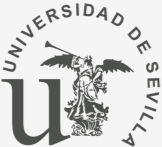Email: laura.martinez@cabimer.es
ORCID ID: 0000-0003-3098-279X
Scopus ID:https://www.scopus.com/authid/detail.uri?authorId=16039568500
Leukocyte movement is mostly driven by chemokines and their receptors, that belong to the G protein coupled receptors (GPCRs). This pair regulate a myriad of physio-pathological processes, ranging from cellular and humoral immune response to lymphocyte recruitment during chronic inflammation and tumor metastasis.
My work has focused on the study of chemokine receptor conformations at the cell membrane and their functional relevance. Chemokine receptors are highly dynamic and are modulated by coexpression of other chemokine receptors, interaction with other GPCRs or with transmembrane proteins, and by the concentration of their ligands. Ultimately, their membrane organization depends on the cell type and the milieu.
Currently, the main goal of my research is to gain a deeper understanding of the chemokine receptor biology during T cell migration. These receptors are organized at the cell membrane as monomers, dimers and small oligomers (nanoclusters, 3 receptors) in resting cells. Upon chemokine stimulation, both the size and the percentage of these oligomers (nanoclusters) increase at the cell membrane. We have recently found that there is a correlation between the size of these nanoclusters and the cell migration capacity. However, the organization of these receptors during leukocyte migration and the underlying molecular mechanisms are still unknown.
We set up assays to study the chemokine receptor stoichiometry and dynamic during T cell movement, both prior lymphocyte extravasation and during interstitial migration. Furthermore, we are interested in identifying possible target proteins that regulate the chemokine receptor-spatiotemporal organization.
This knowledge will help discovering new therapeutic targets to achieve a thorough modulation of T cell adhesion and migration capacity in pathologies involving chronic inflammation, mass leukocyte infiltration or tumor cell dissemination.
Funding:

- García-Cuesta E.M., Rodríguez-Frade J.M., Gardeta S.R., D’Agostino G., Martínez P., Soler Palacios B., Cascio G., Wolf T., Martínez-Muñoz L and Mellado M. “Altered CXCR4 dynamics at the cell membrane impairs directed cell migration in WHIM syndrome patients”. PNAS 2022; 119 (21). doi: 10.1073/pnas.2119483119.
- Olazabal-Moran M, Sanchez-Ortega M, Martínez-Muñoz L, Hernandez C, Rodriguez MS, Mellado M and Carrera AC. “Fluctuations in AKT and PTEN activity are linked by the E3 ubiquitin ligase cCBL”. Cells 2021 Oct 20;10(11):2803. doi: 10.3390/cells10112803
- Sorzano COS*, Martínez-Muñoz L*, Cascio G, García-Cuesta EM, Vargas J, Mellado M and Rodríguez-Frade JM. “Image processing protocol for the analysis of the diffusion and cluster size of membrane receptors by fluorescence microscopy”. J Vis Exp. 2019 Apr9; (146).doi: 10.3791/59314 (* co-authors).
- Martínez-Muñoz L, Villares R, Rodríguez-Fernández JL, Rodríguez-Frade JK and Mellado M. “Remodeling our concept of chemokine receptor function: from monomers to oligomers”. J Leuk Biol. 2018 Aug;104(2):323-331. doi: 10.1002/JLB.2MR1217-503R
- Martínez-Muñoz L*, Rodríguez-Frade JM, Barroso R, Sorzano COS, Torreño-Piña JA, Santiago CA, Manzo C, Lucas P, García Cuesta EM, Gutierrez E, Barrio L, Vargas J, Cascio G, Carrasco YR, Sánchez-Madrid F, García-Parajo MF, Mellado M.*“Separating actin-dependent chemokine receptor nanoclustering from dimerization indicates a role for clustering in cxcr4 signaling and function”. Molecular Cell. 2018 Sep 6;71(5):873. doi: 10.1016/j.molcel.2018.08.012. *co-corresponding author
- Del Prete A, Martínez-Muñoz L, Mazzon C, Toffali L, Sozio F, Za L, Bosisio D, Gazzurelli L, Salvi V, Tiberio L, Liberati C, Scanziani E, Vecchi A, Laudanna C, Mellado M, Mantovani A, Sozzani S. “The atypical receptor ccrl2 is requires for cxcr2-dependent neutrophil recruitment and tissue damage“. Blood. 2017 Sep 7;130(10):1223-1234. doi: 10.1182/blood-2017-04-777680. Epub 2017 Jul 25.
- Collins PJ, McCully ML, Martínez-Muñoz L, Santiago C, Wheeldon J, Caucheteux S, Thelen S, Cecchinato V, Laufer JM, Purvanov V, Monneau YR, Lortat-Jacob H, Legler DF, Uguccioni M, Thelen M, Piguet V, Mellado M, Moser B. “Epithelial chemokine cxcl14 synergizes with cxcl12 via allosteric modulation of cxcr4” FASEB J. 2017 Jul;31(7):3084-3097. doi: 10.1096/fj.201700013R. Epub 2017 Mar 30.
- Martínez-Muñoz L, Barroso R, Dyrhaug SY, Navarro G, Lucas P, Soriano SF, Vega B, Costas C, Muñoz-Fernández MÁ, Santiago C, Rodríguez Frade JM, Franco R, Mellado M. “CCR5/CD4/CXCR4 oligomerization prevents HIV-1 gp120IIIB binding to the cell Surface” Proc Natl Acad Sci U S A. 2014 May 13;111(19):E1960-9. doi: 10.1073/pnas.1322887111. Epub 2014 Apr 28.
- Holgado BL, Martínez-Muñoz L, Sánchez-Alcañiz JA, Lucas P, Pérez-García V, Pérez G, Rodríguez-Frade JM, Nieto M, Marín O, Carrasco YR, Carrera AC, Alvarez-Dolado M, Mellado M. “CXCL12-mediated murine neural progenitor cell movement requires PI3KB activation”. Mol Neurobiol. 2013 Aug;48(1):217-31. doi: 10.1007/s12035-013-8451-5. Epub 2013 Apr 19.
- Barroso R, Martínez Muñoz L, Barrondo S, Vega B, Holgado BL, Lucas P, Baíllo A, Sallés J, Rodríguez-Frade JM, Mellado M. “EBI2 regulates CXCL13-mediated responses by heterodimerizarion with CXCR5”. FASEB J. 2012 Aug 28.
- Parrillas V, Martínez Muñoz L, López-Holgado B, Kumar A, Cascio G, Lucas P, Rodríguez-Frade JM, Malumbres M, Carrera AC, Van Wely K And Mellado M. “Suppressor of cytokine signaling 1 blocks mitosis in human melanoma cells”. Cellular and Molecular Life Sciences. 2012 Aug.
- Martínez-Muñoz L, López-Holgado B, Martínez-A C, Rodríguez Frade JM, Mellado M. “Chemokine receptor oligomerization: a further step towards chemokine function”. Immunol. Lett. 2012; 145 – 1-2, pp. 23-29.
- Schiraldi M, Raucci A, Muñoz LM, Livoti E, Celona B, Venereau E, Apuzzo T, De Marchis F, Pedotti M, Bachi A, Thelen M, Varani L, Mellado M, Proudfoot A, Bianchi ME, Uguccioni M. “HMGB1 promotes recruitment of inflammatory cells to damaged tissues by forming a complex with CXCL12 and signaling via CXCR4”. J Exp Med. 2012 Mar 12;209(3):551-63. Epub 2012 Feb 27.
- Muñoz LM, Lucas P, Holgado BL, Barroso R, Vega B, Rodríguez-Frade JM, Mellado M. “Receptor oligomerization: a pivotal mechanism for regulating chemokine function”. Pharmacol Ther. 2011 Sep;131(3):351-8. Epub 2011 May 11.
- Thelen M, Martinez-Muñoz L, Rodríguez-Frade JM and Mellado M. “Chemokine receptor oligomerization: functional considerations”. Current Opinion in Pharmacology, 2010; 10(1): 38-43.
- Martinez-Muñoz L, Lucas P, Navarro G, Checa AI, Franco R, Martínez-A C, Rodríguez-Frade JM, Mellado M. “Dynamic regulation of CXCR1 and CXCR2 homo- and heterodimers”. J. Immunol. 2009; 183: 7337-46
- Santiago C, Ballesteros A, Martinez-Muñoz L, Mellado M, Kaplan GG, Freeman G and Casasnovas JM. “Structures of t cell immunoglobulin mucin protein 4 show a metal-ion-dependent ligand binding site where phosphatidylserine binds”. Immunity, 2007 Dec; 27(6):941-51
- Santiago C, Ballesteros A, Tami C, Martinez-Muñoz L, Kaplan GG and Casasnovas JM. “Structures of t cell immunoglobulin mucin receptors 1 and 2 reveal mechanisms for regulation of immune responses by the TIM receptor family”. Immunity, 2007 Mar; 26(3):299-310
- Sierro F, Biben C, Martinez-Muñoz L, Mellado M, Ransohoff R, Li M, Woel B, Leung H, Groom J, Batten M, Harvey RP, Martínez-A C, Mackay RC And Mackay F. “Disrupted cardiac development but normal hematopoiesis in mice deficient in the second CXCL12/SDF-1 receptor, CXCR7”. Proc. Natl Acad. Sci., 2007 Sep;104(37):14759-14764






